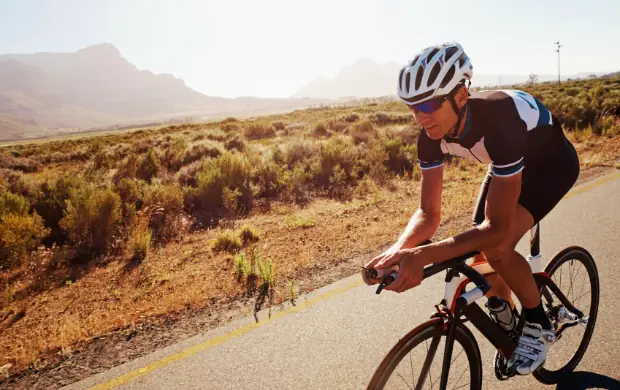
I am constantly amazed at the number of triathletes riding top-of-the-line time trial bikes who are unable to hold an aero position. Take any iron-distance event, for example. There are always several racers, both men and women, sitting up on the flats, downhill rollers and even into the wind.
These bikes are designed to cheat the wind, ultimately allowing a triathlete to save energy and make a shorter day for themselves. The dollars spent on their machine and accompanying aero equipment become a moot point if they cannot hold the aero position throughout the duration of the race.
As a coach, I have to ask myself why--and several reasons come to mind:
- No fit: Athletes who purchase their bikes online and tweak their own fit.
- Improper fit: Athletes in too aggressive of a position to hold for longer events.
- Weak core: Fatigue sets in, preventing the holding of the aero position.
- Inexperience: Athletes new to the sport or new to time trial geometry.
Fit
Comfort is key in long distance training and racing. Find a reputable bike fitter that understand the demands of a long distance triathlon.
Easy tip? Ask your friends and training partners who they use and what their experience was with them.
A textbook aero position may be tolerable for a sprint or Olympic distance race, but for longer events you need to be comfortable on your aero bars. Sometimes that means a less aggressive position.
A good fit is an ongoing process, and the fit specialist you work with should provide follow-up sessions to tweak your geometry. You should also have your fit checked from year-to-year, as fitness and flexibility change due to aging or injury.
Core
Core work should be done year-round. Targeting abdominal, hip and back muscles two or three times per week will help you maintain the aero position.
Experience
Athletes need to get used to the handling and fit of a time trial bike. If you are new to cycling or to a TT bike, you need to practice your bike handling skills on various terrains. Practice cornering, descending, climbing, stopping, starting, shifting and drinking or eating--first alone, then with training partners.
In triathlon, equipment and the athlete are not separate elements but rather integrated parts. If you are going to make substantial investments in your equipment, make sure you balance those with equal investments into your fit and your fitness to maximize its effectiveness.
Recent Articles:
- 6 Ways Triathletes Can Get Faster On The Bike
- Lose the Belly Fat: Weight Management for Triathletes
- 5 Keys To Improving Your Swim Technique
Connect with us on Twitter, Facebook, Instagram or Pinterest for more tips, recipes and ideas to fuel your ACTIVE life.
 Put your mental strength to the test. Sign up for a triathlon.
Put your mental strength to the test. Sign up for a triathlon.



